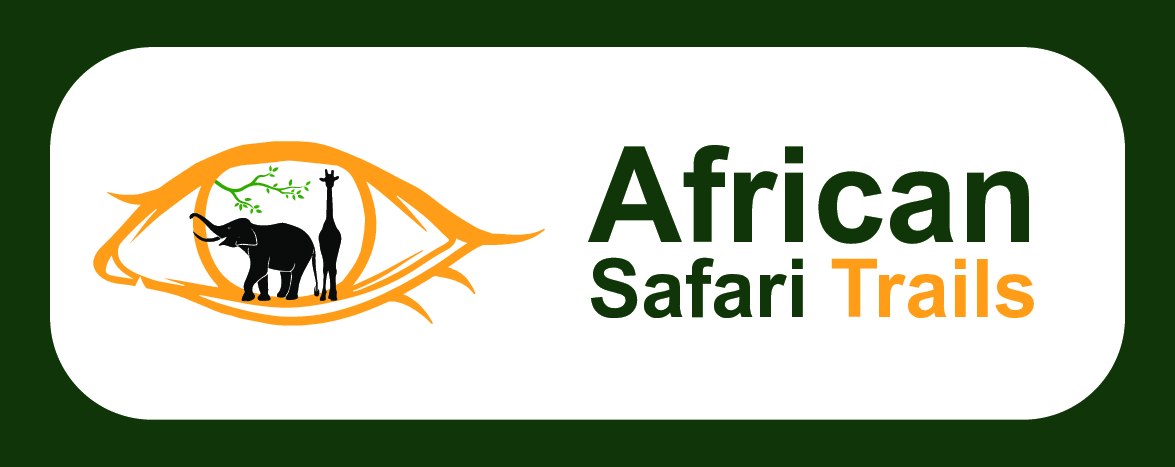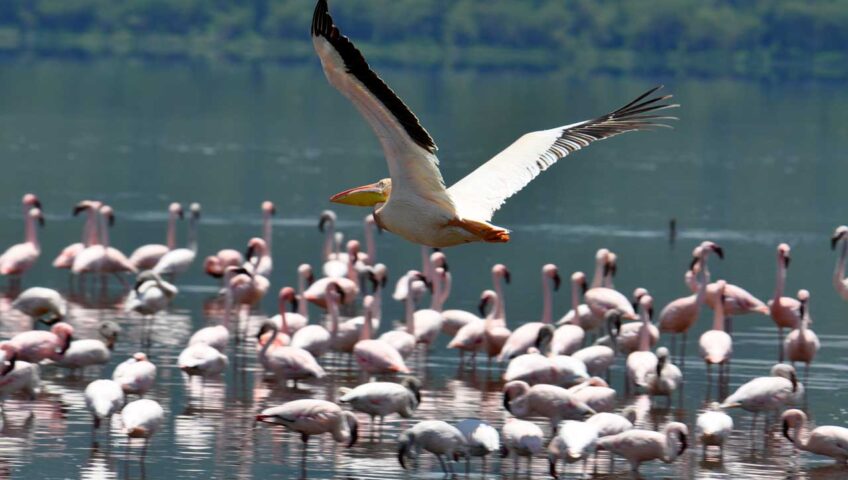Birding Paradise: Flamingos, Storks, and More
Africa is a dream destination for birdwatchers, offering an incredible diversity of avian life, from the iconic Lesser and Greater Flamingos that paint lakes pink to the majestic storks soaring high above. Here’s a guide to the best places to witness these spectacular birding phenomena:
Flamingos: The Pink Spectacle
Massive flocks of flamingos create some of Africa’s most breathtaking natural displays, especially in the Great Rift Valley’s soda lakes.
-
Kenya – Rift Valley Lakes:
- Lake Nakuru National Park: Historically famous for its millions of flamingos, though numbers can fluctuate due to changing water levels. Still a fantastic birding park with over 400 species, including pelicans and various waterfowl.
- Lake Bogoria: Considered by many to be the current stronghold for Lesser Flamingos in Kenya, often hosting millions. The hot springs and geysers add to the dramatic scenery. Flamingo numbers here are generally more consistent than at Lake Nakuru.
- Momella Lakes (Arusha National Park): In Tanzania near Arusha, these shallow alkaline lakes attract significant numbers of flamingos, offering beautiful contrasts against the volcanic backdrop of Mount Meru.
-
Tanzania – Rift Valley Lakes:
- Lake Natron: The largest breeding ground for Lesser Flamingos in Africa. While reaching it can be an adventure, witnessing the sheer scale of the flamingo population and their breeding rituals is unforgettable. The best time to observe them is during the dry season (July to October).
- Lake Manyara National Park: This shallow, alkaline lake attracts a significant number of flamingos, particularly during the wet season (November/December and April/May). The park also boasts a high diversity of other bird species (over 400).
- Lake Magadi (Ngorongoro Crater): Located within the iconic Ngorongoro Crater, Lake Magadi provides a habitat for flamingos year-round, adding a vibrant splash of pink to the already stunning caldera landscape.
- Lake Eyasi & Lake Ndutu: These seasonal lakes, particularly Ndutu, can host spectacular flamingo gatherings from June to November, especially as water levels fluctuate.
-
Uganda – Western Rift Valley Lakes:
- Lake Munyanyange (Queen Elizabeth National Park): Sited on the northeastern fringes of Queen Elizabeth National Park, this is a prime spot for seeing flamingos in Uganda, especially Lesser Flamingos during the dry season.
- Lake Katwe: Nearby Lake Munyanyange, the salt pans of Lake Katwe also attract flamingos to their saline waters.
- Other Rift Valley Lakes: Many smaller, lesser-known alkaline lakes in Uganda’s Western Rift Valley also support flamingo populations for parts of the year, offering more secluded viewing opportunities. The best months to see flamingos in Uganda are during the dry seasons: June to September and December to February.
Storks: Majestic Waders and Scavengers
Storks are a diverse family, from the iconic Shoebill to the ubiquitous Marabou.
-
Shoebill Stork (The Holy Grail for Birders):
This prehistoric-looking bird is one of Africa’s most sought-after species due to its rarity and unique appearance.
- Uganda: Considered the stronghold for Shoebills.
- Mabamba Swamp (near Entebbe): The most accessible and reliable spot for Shoebill sightings, often via canoe trips through the papyrus. It’s a Ramsar site and a fantastic birding destination.
- Murchison Falls National Park: Especially along the Nile Delta where it meets Lake Albert, boat trips often yield Shoebill sightings.
- Queen Elizabeth National Park: While famous for tree-climbing lions, its wetlands also host Shoebills.
- Lake Mburo National Park: Shoebills can be found in the swamps around the lake.
- Semuliki National Park: Another reliable spot in Western Uganda.
- Ziwa Rhino Sanctuary (Lugogo Swamp): While known for rhinos, its wetlands also offer Shoebill opportunities.
- Zambia (Bangweulu Swamps): A remote and dedicated birding destination for Shoebills, often requiring specialized tours.
- Rwanda (Akagera National Park): Akagera’s marshy wetlands are also home to the endangered Shoebill.
- Uganda: Considered the stronghold for Shoebills.
-
Other Storks (Yellow-billed, Saddle-billed, Marabou, Open-billed, Woolly-necked, etc.):
These species are widespread and commonly seen across many African safari destinations.
- All Major National Parks in East and Southern Africa: You’ll frequently encounter various stork species in almost any major safari park, especially near water sources.
- Kruger National Park (South Africa): Known for Saddle-billed Storks and Marabou Storks.
- Okavango Delta (Botswana): The rich waterways are excellent for Yellow-billed Storks and other wading birds.
- Tarangire National Park (Tanzania): Good for various storks, often seen among the large elephant herds.
- Queen Elizabeth National Park (Uganda): The Kazinga Channel is a hotspot for waterbirds, including various storks.
General Birding Paradise Highlights:
Beyond flamingos and storks, Africa is teeming with diverse birdlife.
- Uganda: Often called the “Pearl of Africa” and a premier birding destination with over 1,000 species, including Albertine Rift endemics like the Green-breasted Pitta in Kibale Forest and Bwindi Impenetrable National Park.
- Kenya: With over 1,100 species, Kenya offers incredible diversity from the Rift Valley lakes to the dry northern lands and coastal forests (e.g., Arabuko-Sokoke Forest).
- Tanzania: Over 1,100 recorded species, with hotspots like the Serengeti, Ngorongoro, and the unique Usambara Mountains for forest endemics.
- Botswana (Okavango Delta): A wetland paradise with over 400 species, including rarities like the Pel’s Fishing Owl and Wattled Crane.
- Zambia (South Luangwa National Park): Known for its exceptional walking safaris and incredible bird diversity, especially during the green season.
Best Time for Birding Safaris: The “green season” or “wet season” (roughly November to April) is often considered the best time for birdwatching across much of Africa. This is when migratory birds are present, resident species are in breeding plumage, and the landscapes are lush. While game viewing for mammals might be slightly more challenging due to thicker vegetation, the avian rewards are immense.

